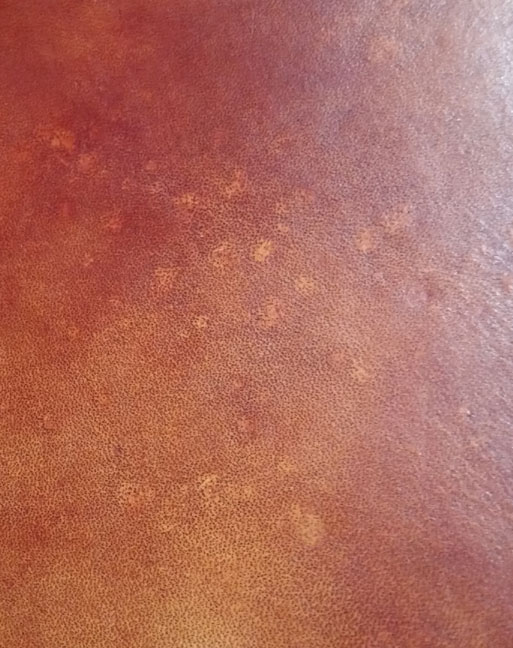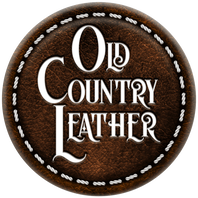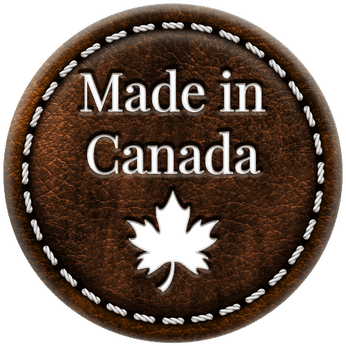About Leather
Did you know? The term "Genuine Leather" is often seen on products and is use to make buyers feel they are getting a higher quality leather. Although it is real leather, genuine leather is actually a low grade of leather.
Leather ranks as follows:
Full Grain
Top Grain
Split Grain
Genuine
Bonded
We only use Full grain and Top grain leathers in our products.
Scaring
Leather may have different appearances cause by Scars that healed, scars that have not healed, & bug bites that the animal has had from its lifetime. Each of these add character and makes the item even more unique. This is not the case with "Genuine" leather as the top layer has been removed making the look more uniform however lower in strength.
Leather may have different appearances cause by Scars that healed, scars that have not healed, & bug bites that the animal has had from its lifetime. Each of these add character and makes the item even more unique. This is not the case with "Genuine" leather as the top layer has been removed making the look more uniform however lower in strength.
|
Bug bites, often hard to spot before dying, these round spots usually dye slightly lighter.
|
Scars that have not healed can be felt with your fingers, since the cut has not healed before the animals hide was processed.
|
Scars that have healed have a very unique look will dye slightly lighter, really showing no two pieces are a like.
|
Is Leather just from cows?
Leather is made of the skin of an animal by a tanning process. Most often used from cattle, however any animal can produce leather. Other animals used are pigs, goats, sheep, deer, snakes, alligators, ostriches and kangaroos.
We use cow hides and water buffalo hides
Leather is made of the skin of an animal by a tanning process. Most often used from cattle, however any animal can produce leather. Other animals used are pigs, goats, sheep, deer, snakes, alligators, ostriches and kangaroos.
We use cow hides and water buffalo hides
Different Tanning processes:
- Vegetable-tanned leather: Is tanned by using vegetable matter, such as tree bark and is skin tone/brown in color, It is the only form of leather suitable for use in leather carving or stamping.
- Chrome-tanned leather: Uses chromium sulfate and other chromium salts. It is more supple and pliable than vegetable-tanned leather and does not discolor or lose shape as drastically in water as vegetable-tanned.
- Alum-tanned leather is transformed using aluminium salts. Alum-tanned leather is technically not tanned, as tannic acid is not used, and the resulting material reverts to rawhide if soaked in water long enough to remove the alum salts.
- Aldehyde-tanned leather: Is tanned using glutaraldehyde or oxazolidine compounds. Seen in shoes for infants and automobiles.
- Brain tanned leathers are made by a labor-intensive process that uses emulsified oils, often those of animal brains such as deer, cattle, and buffalo. They are known for their exceptional softness.
- Chamois tanned leather: Made using marine oils like cod oils that oxidize easily to produce the aldehydes that tan the leather to color it.
- Synthetic-tanned leather: Is tanned using aromatic polymers, Novolac or Neradol types.
- Rawhide is made by scraping the skin thin, soaking it in lime, and then stretching it while it dries. For use in lacing or stitching and for making many varieties of dog chews. And other projects that require little flex, as it brittle.










